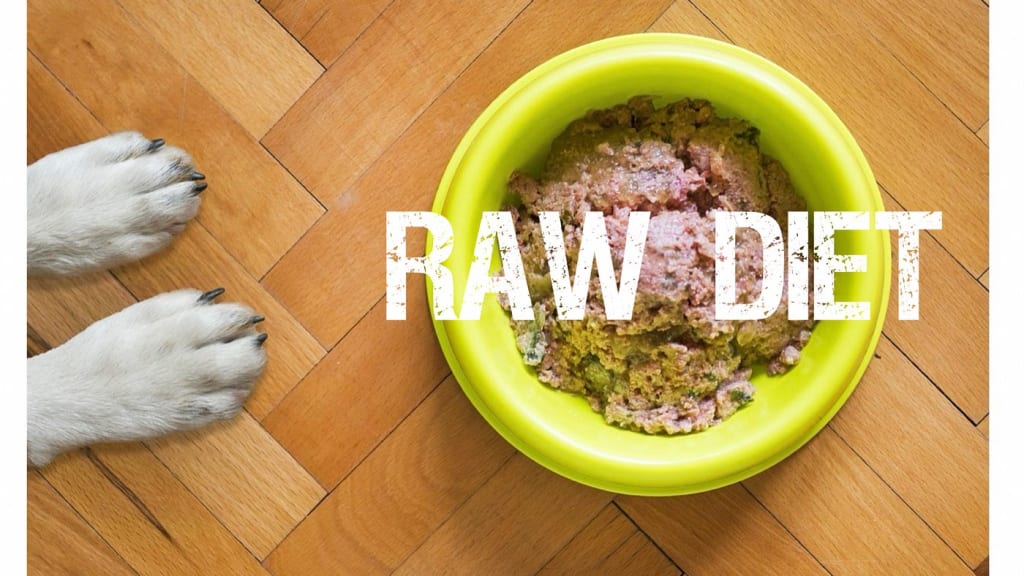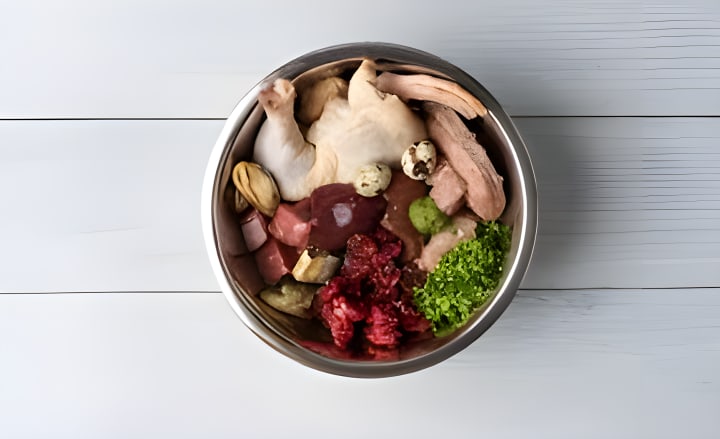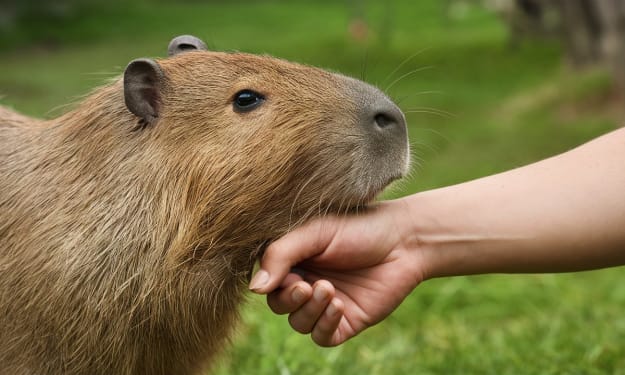Transitioning Your Dog to a Raw Food Diet: A Step-by-Step Guide
Dog Raw Food: A Step-by-Step Guide

Introduction:
Understanding the basics of a raw food diet involves incorporating essential components like meat (including bones, muscle, and organs), fruits and vegetables for fiber and vitamins, and possibly supplements such as fish oil or kelp. It's essential to start the transition slowly, gradually introducing raw food alongside their current diet to avoid digestive issues. Monitoring your dog's health throughout the process is crucial, ensuring they adjust well to the new diet and experience benefits like improved coat condition, digestion, and overall vitality.
Why Choose a Raw Food Diet?
Dog owners frequently choose raw food diets. Many people think that there are many health advantages to this diet. The following are some reasons for thinking about feeding your dog just raw food:
- Better Digestion: Dogs may have an easier time digesting raw food.
- Better Coat: Raw food diets often result in healthier, brighter jackets for dogs
- Increased Energy Levels: After feeding their dogs raw food, several dog owners claim to have seen an increase in their pets' energy levels.
- Weight control: A raw food diet may assist in keeping a healthy weight.
Understanding the Basics of a Raw Food Diet
Before making a transition, it's critical to understand the requirements of a raw food diet. These are the main elements:
- Meat: This is the primary component. It consists of bones, muscle meat, and organ meat.
- Fruits and vegetables: These are for fiber and vitamins.
- Supplements: Some diets call for supplements like kelp or fish oil.
Start Slow
Regularly introduce raw foods. To start, mix a tiny bit of raw food into your dog's meal. As time goes by, add more raw food and less cooked stuff. This can help prevent digestive issues.
Mix 25% Raw Food
Mix 25% raw food with 75% of their current diet. Monitor your dog closely for any signs of an upset stomach.
Increase to 50% Raw Food
Up to 50% of your dog's food should be raw if they are well to the new diet. Keep a careful eye on your dog.
Move to 75% Raw Food
Seventy-five percent of your dog's diet should be raw. Monitor overall digestion and general health.
CompleteTransition, to 100% Raw Food
Your dog should be completely switched to a raw food diet by the end of the fourth week.

Monitor Your Dog's Health
Make sure you monitor your dog's health closely during this transition. A healthier coat, better digestion, and more vitality are what you should be looking for. See your doctor right away if you see any problems.
Keep it Balanced
A healthy diet should include raw foods. Make sure the proper proportion of meat, veggies, fruits, and vitamins are given to your dog. Here are a few suggestions for a proper raw diet:
- Variety: Offer different types of meat to provide various nutrients.
- Vegetables and Fruits: Include a variety of vegetables and fruits for added vitamins.
- Supplements: Add supplements like fish oil for omega-3 fatty acids.
Common Mistakes to Avoid
When transitioning to a raw food diet, it's crucial to avoid typical errors. Here are some pitfalls to watch out for:
- Too Fast Transition: Moving too quickly can cause digestive issues.
- Unbalanced Diet: Ensure your dog is getting a balanced diet with all the necessary nutrients.
- Not Consulting a Vet: Always consult your vet before making dietary changes.
Benefits of a Raw Food Diet
Numerous dog owners who have made the move to a raw food diet attest to several advantages. These are a few typical benefits:
- Better Digestion: Many dogs experience improved digestion and fewer digestive issues.
- Healthier Skin and Coat: Dogs often have shinier coats and healthier skin.
- Increased Energy: Many dogs have more energy and seem more active.
- Better Weight Management: Raw food diets can help dogs maintain a healthy weight.
Conclusion
Many dog owners find the benefits of switching to a raw food diet quite persuasive. These diets are to help with weight control, increase energy levels, improve coat health, and improve digestion. It's essential to grasp the fundamentals: Meat, bones, and organs are the main components of raw food diets; fruits, vegetables, and vital elements like fish oil are included as supplements. To avoid stomach problems, start slowly and increase the amount of raw food your dog is fed over many weeks until they have completely transitioned. It's crucial to keep an eye on your dog's health at all times, searching for gains in digestion, general vigor, and coat condition. Ensure the diet is always well-balanced, with a variety of proteins and the right vitamins.
About the Creator
John Wick
I am a dedicated writer with over three years of experience in the pet niche, specializing in various pet categories. I bring knowledge & passion to my writing. Currently, I contribute articles to petdailykit.com.






Comments
There are no comments for this story
Be the first to respond and start the conversation.